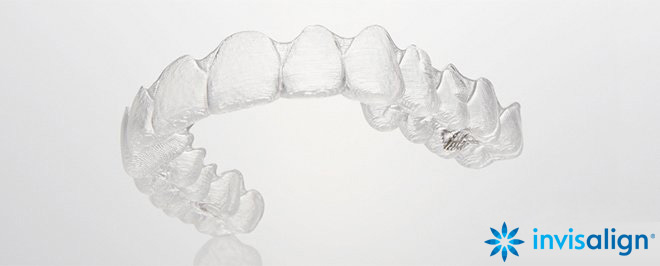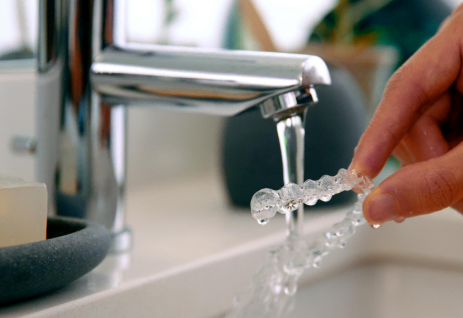What is Invisalign, the discreet transparent mouthpiece?
Invisalign is a treatment method that gradually moves and straightens teeth by placing clear aligners on the teeth instead of traditional wires.
It is much less noticeable than traditional wire braces! It is less uncomfortable and less disruptive to your daily life.
The clear aligners (mouthpieces) are discreet even when worn.
The mouthpiece is individually made for each tooth and is replaced with a new mouthpiece at each stage of treatment. Combining the latest 3D imaging technology with aesthetic elements, Invisalign has been used by more than 12 million people worldwide as an ‘invisible’, ‘pain-free’ and ‘comfortable’ orthodontic treatment.
The duration of treatment with Invisalign is about the same as with conventional wire braces, although it depends on the condition of the individual’s teeth and the dentist’s treatment plan.
The average Invisalign treatment time is said to be one to two years, although in cases where there are only a few teeth to be straightened, the treatment can be completed in a few months.
Invisalign differs from conventional orthodontics because
(1) The almost transparent mouthpiece is hardly noticeable.
(2) Less pain and discomfort because teeth are moved gradually without the use of metal.
3. Can be put on and taken off by yourself when eating, brushing, cleaning, etc.
4. Minimum number of visits required for orthodontic treatment
Caring for your mouthpiece
We have many patients with Invisalign orthodontics (mouthpiece orthodontics) and many who use a mouthpiece for teeth grinding.
We are often asked how to care for the mouthpiece.
Daily maintenance is straightforward, a simple rinse with water is all that is required,
After use, the mouthpiece may become yellowish or discoloured to a cloudy white.
This can be caused by both the mouth and the mouthpiece, but did you know that there are 350-700 different types of bacteria in our mouths at any one time?
That’s a staggering number, and of course these bacteria can also stick to the mouthpiece.
It is these bacteria that cause the yellowing and odour of the mouthpiece.
The mouthpiece also forms tartar!
Tartar is formed by calcium, phosphorus and other minerals in saliva and sticks to the mouthpiece.
This causes a white, crusty stain.
Unlike metal dentures, mouthpieces need even more care because tartar and stains can easily stick to the surface.
How do I care for my orthodontic or teeth grinding mouthpiece?
What they have in common is that they should not be scrubbed! This means
Some people use commercial toothpaste and scrub with a toothbrush, but this is NOT GOOD!
The abrasives in toothpaste and toothbrush scratch the surface of the mouthpiece and create a breeding ground for bacteria!
Bacteria can accumulate in these fine scratches and cause odour.
We still recommend that you use a mouthpiece cleaner to maintain your mouthpiece, as this will prevent odour and clean it at the same time!
Mouthpiece cleaners are also available from chemists at reasonable prices.
For example: Polident Mouthpiece Cleaner.
Very easy to use! Just add these tablets and the mouthpiece to water.
If it’s that easy, you won’t find it hard to do it every day.
Of course, if you are using these solutions to clean your mouthpiece, even if you are used to just rinsing it off, make sure you use water or lukewarm water.
Some people dip their teeth in boiling water to disinfect or sterilise them, but this tends to deform them ✖.
Even if it suits the shape of your teeth, it will be uncomfortable.
We recommend that you wear your mouthpiece for at least 22 hours a day.
If you drink tea, coffee or wine while wearing it, it will stain (especially chai lattes, which turn yellow immediately),
If you are concerned about staining, please use a straw.
It is important to rinse and dry the mouthpiece well after removal.
Wipe off moisture thoroughly and store in a well-ventilated case.
Otherwise, depending on the season, mould may develop.
Leaving the mouthpiece in a state where the moisture has not completely dried and wearing it at night is the same as putting a large amount of germs into your mouth.
It is the same as putting a large amount of germs in your mouth.
Pay close attention to hygiene as it is something you are putting directly into your mouth!
◆ www.bestdentist.com.au ◆
Dr Knox Kim is Invisalign’s Diamond Invisalign Provider and Invisalign’s only Clinical consultant/ Speaker among General dentists in Australia
Top 6th in the world in Invisalign International Gallery, Principal dentist at Sydney CBD and vice principal dentist at Tokyo, Finished over 1,500 Invisalign patients in both Sydney and Tokyo,
treating over 400 patients in both clinics, Invisalign’s official lecturer, lecturing at Shangai, Hangzhou, Seoul, Tokyo, Osaka, Nagoya, Las Vegas, and all the major cities in Australia and New Zealand
#
Information Disclaimer
The content of this article is meant for informational purposes only and should not be considered a source of professional advice, recommendations, or endorsements. It is not a substitute for seeking expert guidance or making well-informed decisions based on individual circumstances. Although we strive for accuracy and reliability, we cannot guarantee the information's completeness or suitability for all situations. Readers are urged to verify facts, consult experts, and consider their own context before taking actions or decisions based on this content. No warranties, explicit or implied, are provided regarding the accuracy, timeliness, or completeness of the presented information. Relying on this information is at the reader's own discretion and risk. We encourage readers to consult relevant professionals or experts for advice tailored to their specific needs. Neither the author, publisher, nor any affiliated parties will be held responsible for errors, omissions, or damages resulting from the use or reliance on the information in this article.



